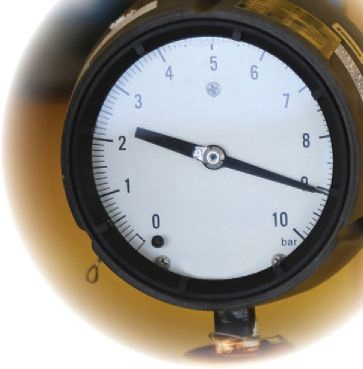Complexity in ISFA (in-service fluid analysis): Part XXXIII
Jack Poley | TLT On Condition Monitoring July 2017
Holistic condition monitoring in the 21st Century: Part V

I’VE BEEN DISCUSSING THE AMALGAMATION of Tier 1 and (either) Tier 2/Tier 3 in-service fluid analysis (ISFA) data over the last few columns, as part of holistic condition monitoring (CM). Included in this discussion was the phenomenon of time displacement with dynamic sensor information and episodic ISFA sampling (thermography is mostly episodic, too, beyond standard monitoring of operating temperatures for machinery fluids). While the viability of ISFA sensors is now beginning to gain traction, and one considers the time dichotomy of Tier 1 and Tier 2/Tier 3 ISFA, there is a larger holistic aspect to consider: that of
all (available/invoked) CM techniques and methodology:
•
ISFA (oldest CM technology as primary technique, though rather new to sensor adaptation)
•
Vibration (VIB—established for CM in the 1970s—primary technique)
•
Ultrasound and acoustic subsets of VIB
•
Thermography/infrared (established for CM in the 1970s)
•
There are other possible examples, of course.
THE DATA AVALANCHE
This column begins with an overview as to the magnitude of data involved—now that sensors are proliferating—as it is breathtaking if one takes it to extremes. In this century two new techniques, ISFA sensors and ultrasound, have gained substantial traction and some quantum of parity with VIB. If all the currently popular techniques are employed, there can be as many as three or more sets of streaming data to apply, in addition to regular ISFA from a fixed base lab.
Separately there is the need (well, there should be) to consider all sensor and analytical testing data in concert: to uncover as much about the target machine as possible. Sadly there are a number of instances where VIB and ISFA are both employed in a given plant, but the data are not necessarily cross compared. With ISFA sensors and ultrasound, there are, yet, that many more iterations to look forward to. As an aside, any data evaluator expecting to perform a full data assessment across testing platforms without sophisticated pattern recognition software should consider alternative employment to avoid an interminable migraine.
The application of multiple sensors—VIB, ultrasound and some ISFA and thermography—increases the data several orders of magnitude. Sensors will ultimately be the overwhelming majority of the CM data world because they can be repeatedly polled in fractions of seconds. In fact, sensors need to be polled frequently, else there’s no point having them. Regardless, some thought-out compromise is necessary in the data gathering, utilization and retention.
So it becomes readily clear that a logical data reduction is necessary to achieve a practical view of what the sensor readings may suggest. Most practitioners of intelligent agents (domain-infused expert systems) are using standard statistical techniques, such as data excursion bandwidth (limits), average and mean, persistence (Pareto-type charting) and other common approaches.
THE 4TH DIMENSION?
And there is another factor, time, in terms of data events, to consider. The data will have to be monitored, not just for correlation but also for synchronization. The permutations are exciting if one likes that sort of thing. They’re surely plentiful if not complex.
WHO OR WHAT IS GOING TO DECIPHER AND CORRELATE THE DATA?
Independent of the above, there is the matter of melding domain knowledge for each of the test/sensor types that will be employed. Recall I mentioned earlier that VIB and ISFA groups in plants are as likely to not be comparing data as doing it. This means that rules governing interaction of VIB and ISFA data are probably not very plentiful or adequate. In fact, most VIB people are not very familiar with ISFA, and that works both ways. Yet, for anything productive to come from a possible synergy with two or more differentiated analytical approaches, domain experts from both fields, along with ultrasound, are going to have to pool and discuss their respective expertise.
Next column we’ll attempt to explore the interrelationship of disparate data and domain expertise in greater depth, with the ultimate goal of rendering a practical, effective advisory.
 Jack Poley is managing partner of Condition Monitoring International (CMI), Miami, consultants in fluid analysis. You can reach him at jpoley@conditionmonitoringintl.com
Jack Poley is managing partner of Condition Monitoring International (CMI), Miami, consultants in fluid analysis. You can reach him at jpoley@conditionmonitoringintl.com.
For more information about CMI, visit www.conditionmonitoringintl.com.